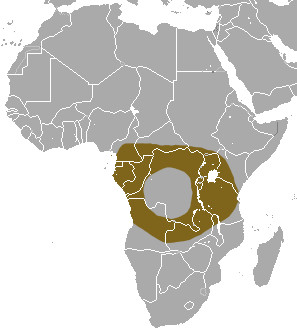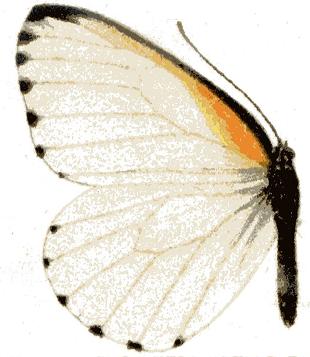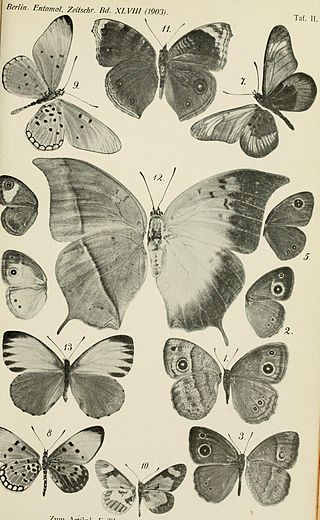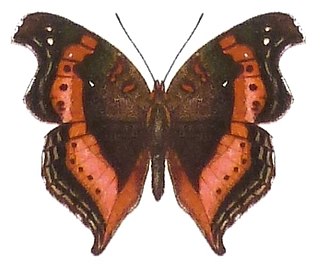
The African Great Lakes are a series of lakes constituting the part of the Rift Valley lakes in and around the East African Rift. They include Lake Victoria, the second-largest fresh water lake in the world by area, Lake Tanganyika, the world's second-largest freshwater lake by volume and depth, and Lake Malawi, the world's eighth-largest fresh water lake by area. Collectively, they contain 31,000 km3 of water, which is more than either Lake Baikal or the North American Great Lakes. This total constitutes about 25% of the planet's unfrozen surface fresh water. The large rift lakes of Africa are the ancient home of great biodiversity, and 10% of the world's fish species live in this region.

The individual member states of the African Union (AU) coordinate foreign policy through this agency, in addition to conducting their own international relations on a state-by-state basis. The AU represents the interests of African peoples at large in intergovernmental organizations (IGO's); for instance, it is a permanent observer at the United Nations' General Assembly.

The scaly spurfowl is a species of bird in the family Phasianidae. It is found in Angola, Burundi, Cameroon, Central African Republic, Republic of the Congo, Democratic Republic of the Congo, Equatorial Guinea, Ethiopia, Gabon, Kenya, Malawi, Nigeria, Rwanda, São Tomé and Príncipe, Sudan, Tanzania, and Uganda.

The grey penduline tit, also known as the African penduline-tit, is a species of bird in the family Remizidae. It is found in Angola, Botswana, Burundi, Republic of the Congo, Democratic Republic of the Congo, Eswatini, Kenya, Malawi, Mozambique, Namibia, Rwanda, South Africa, Tanzania, Uganda, Zambia, and Zimbabwe. Its natural habitats are subtropical or tropical dry forests, dry savanna, and moist savanna. At 8 to 9 cm in length and a weight of 6.5 g (0.23 oz), it is one of the smallest species of bird found in Africa, along with its cousin the Cape penduline tit and the perhaps smaller mouse-colored penduline tit and the tit hylia.

The fan-tailed widowbird, also known as the red-shouldered widowbird, is a species of bird in the family Ploceidae, which is native to grassy and swampy areas of the tropical and subtropical Afrotropics.

The Angola swallow is a species of swallow that is native to the Afrotropics.

The marsh tchagra or blackcap bush-shrike is a species of passerine bird placed in the monotypic genus Bocagia in the family Malaconotidae. It is native to marshes in the tropics and subtropics of Africa. It is sometimes placed in the genus Tchagra.

The turbo shrew is a species of mammal in the family Soricidae. It is found in Angola, Burundi, Cameroon, Central African Republic, Republic of the Congo, Democratic Republic of the Congo, Equatorial Guinea, Gabon, Kenya, Malawi, Rwanda, South Sudan, Tanzania, Uganda, and Zambia. Its natural habitats are subtropical or tropical moist lowland and montane forests.

Aneilema is a genus of monocotyledonous plants of approximately 60 species. The vast majority of the species are native to sub-Saharan Africa, but a few are found in Oceania and one, Aneilema brasiliense, is from South America. It is the third largest genus in the family Commelinaceae after Commelina and Tradescantia, and it is one of only six genera in the family to occur in both the Eastern Hemisphere and the Western Hemisphere.

The white-winged widowbird is a species of passerine bird in the family Ploceidae native to Africa south of the Sahara. It is highly sexually dimorphic in its breeding season, during which the male's yellow plumage turns dark and he gains more white feathers, contrasting with the female's predominantly pale coloration. Three subspecies are recognised.
Commelina acutispatha is an herbaceous plant in the dayflower family found primarily in East and Central Africa, including limited distribution in the African Great Lakes country of Uganda. In addition to that country, it is known from Sierra Leone, Liberia, Ghana, Togo, Nigeria, Cameroon, Gabon, and the Democratic Republic of the Congo. It is a common species in regions of West Africa with significant forest cover, where it is often weedy. It is most common in disturbed, moist soils, in which it scrambles over other plants. The name Commelina thomasii was often used for West African plants until it was realized that Commelina acutispatha, an older name originally applied to plants from the Democratic Republic of the Congo, was the same species. The petals range in color from white to pale lilac to violet; the lower petal is about half as large as the upper paired petals. The central anther is reported to have a blue patch on the connective. It has solitary spathes borne on a peduncle covered in hook-hairs.
Commelina hockii is an herbaceous plant in the dayflower family found primarily in Central Africa, from southwestern Tanzania in the east, west through the Democratic Republic of the Congo and Zambia, and possibly extending further west to Angola. The species' distinctive features include its long, tapering spathes with unfused margins, its white flowers, and its many-flowered lower cymes. It can be found in grasslands and Brachystegia-dominated woodland. It is fairly unusual among Commelina species in having variation in the color of the antherodes, with some individuals having entirely yellow antherodes, while others contain a dark spot in the center. Also, it is one of the only Commelina species known to leave a papery residue of dried fluid inside its spathes; normally only fused-spathe species are known to produce this substance. Only one specimen from Angola resembles this species, but it has blue flowers, suggesting it may be a poorly understood and as-yet undescribed separate species. Commelina hockii is probably closely related to Commelina kituloensis, which shares a similar fruit type, the same tufted perennial habit, similar large spathes with dried fluid substance, and equally numerously flowered inflorescences. That species differs in having purplish flowers, hairy leaves, shorter spathes, and a preference for high altitude grassland.

Mylothris rubricosta, the eastern swamp dotted border or streaked dotted border, is a butterfly in the family Pieridae. It is found in Sudan, Ethiopia, Uganda, Rwanda, Burundi, the Democratic Republic of the Congo, Kenya, Tanzania, Malawi, Zambia, Mozambique, Botswana and Zimbabwe. The habitat consists of papyrus swamps.

Charaxes acuminatus, the pointed pearl charaxes or mountain pearl charaxes, is a butterfly in the family Nymphalidae. It is found in Uganda, Rwanda, Burundi, Kenya, Tanzania, the Democratic Republic of the Congo, Malawi, Zambia and Zimbabwe.

Precis sinuata, the wide-banded commodore, is a butterfly in the family Nymphalidae. It is found in Guinea, Sierra Leone, Liberia, Ivory Coast, Ghana, Nigeria, Cameroon, Equatorial Guinea, São Tomé and Príncipe, the Republic of the Congo, the Central African Republic, the Democratic Republic of the Congo, Uganda, Rwanda, Burundi, Kenya, Tanzania, Malawi, Zambia and Mozambique. The habitat consists of forests and woodland.

Amauris crawshayi is a butterfly in the family Nymphalidae. It is found in Cameroon, Angola, the Democratic Republic of the Congo, Uganda, Rwanda, Burundi, Kenya, Tanzania, Malawi and Zambia. The habitat consists of forests.

Englerophytum is a group of trees in the family Sapotaceae described as a genus in 1914.

Pycnostachys is a genus of plants in the family Lamiaceae, first described in 1826. It is native to sub-Saharan Africa including Madagascar.
- Pycnostachys abyssinicaFresen. - Ethiopia
- Pycnostachys angolensisG.Taylor - Angola
- Pycnostachys batesiiBaker - Cameroon, Zaïre, Sudan, Uganda
- Pycnostachys chevalieriBriq. - Central African Republic
- Pycnostachys ciliataBramley - Tanzania, Malawi, Mozambique, Zambia
- Pycnostachys coeruleaHook. - East Africa from Ethiopia to Botswana; Madagascar
- Pycnostachys congensisGürke - Zaïre, Zambia
- Pycnostachys de-wildemanianaRobyns & Lebrun - East Africa from Burundi to Zimbabwe
- Pycnostachys deflexifoliaBaker - Kenya, Tanzania, Uganda
- Pycnostachys descampsiiBriq. - Zaïre
- Pycnostachys elliotiiS.Moore - Zaïre, Uganda
- Pycnostachys eminiiGürke - from Cameroon to Ethiopia + Tanzania
- Pycnostachys erici-roseniiR.E.Fr - Zaïre, Uganda, Burundi, Rwanda
- Pycnostachys goetzeniiGürke - Zaïre, Uganda, Rwanda
- Pycnostachys gracilisR.D.Good - Angola
- Pycnostachys graminifoliaPerkins - Tanzania
- Pycnostachys kassneriDe Wild - Zaïre, Zambia, Tanzania
- Pycnostachys lancifoliaBramley - Tanzania
- Pycnostachys meyeriGürke - western + central Africa
- Pycnostachys nepetifoliaBaker - Kenya
- Pycnostachys niamniamensisGürke - South Sudan, Kenya, Uganda
- Pycnostachys orthodontaGürke - Zimbabwe, Mozambique, Zambia, Tanzania
- Pycnostachys parvifoliaBaker - Zambia, Tanzania, Malawi
- Pycnostachys prittwitziiPerkins - Zambia, Tanzania
- Pycnostachys pseudospeciosaBuscal. & Muschl. - Zaïre, Zambia
- Pycnostachys recurvataRyding - Ethiopia
- Pycnostachys reticulata(E.Mey.) Benth. - central + southern Africa
- Pycnostachys ruandensisDe Wild. - east-central Africa
- Pycnostachys schliebeniiMildbr. - east-central Africa
- Pycnostachys schweinfurthiiBriq - western + central Africa
- Pycnostachys speciosaGürke - Kenya, Uganda, Tanzania, Rwanda
- Pycnostachys sphaerocephalaBaker - Zambia, Tanzania, Malawi, Zaïre
- Pycnostachys stuhlmanniiGürke - central Africa
- Pycnostachys umbrosa(Vatke) Perkins - Kenya, Tanzania
- Pycnostachys urticifoliaHook. - southeastern Africa
- Pycnostachys verticillataBaker - Zambia, Tanzania

Commelina africana, the common yellow commelina, is a widespread species of flowering plant in the family Commelinaceae. It is native to Sub‑Saharan Africa, Madagascar, Réunion, and the Arabian Peninsula, and has been introduced to India. It is occasionally consumed as a leaf vegetable, and occasionally fed to rabbits and pigs.
















